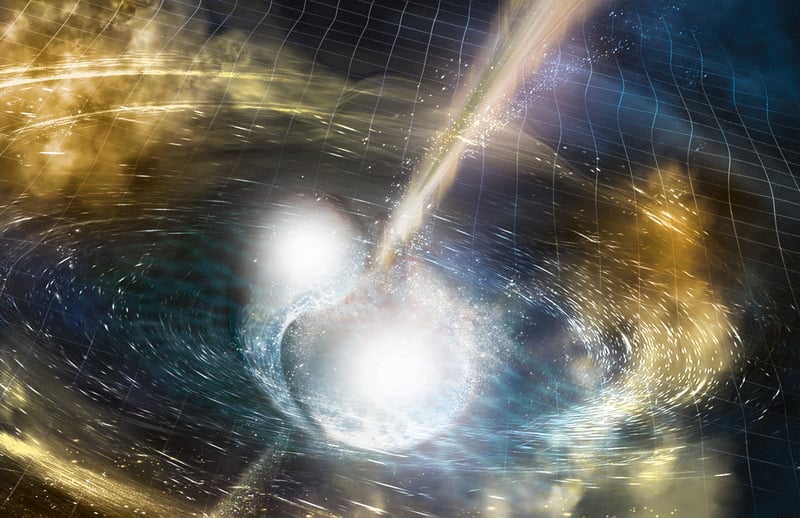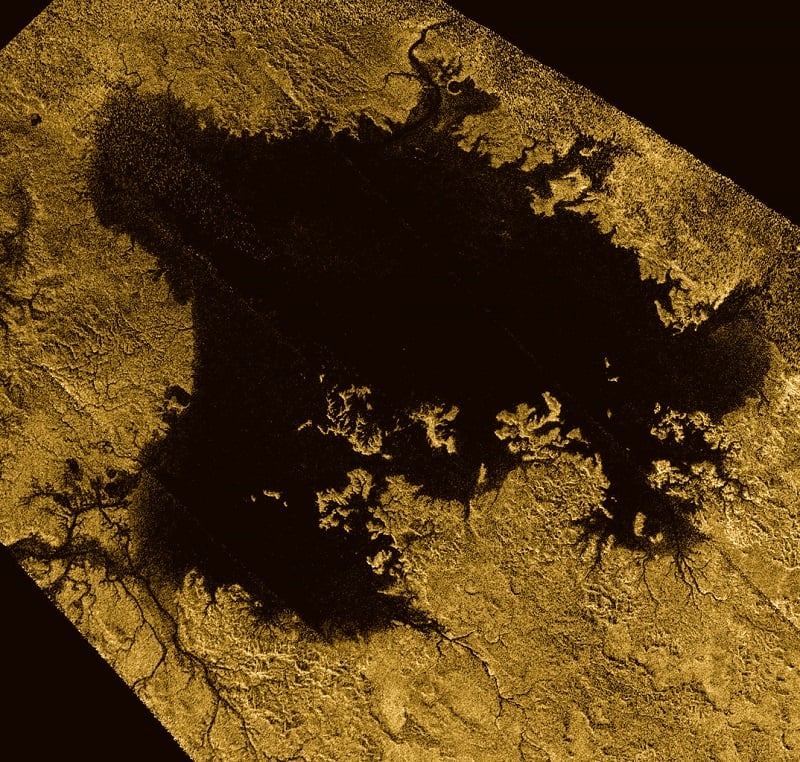
The James Webb Space Telescope is now in LA. After final assembly there, it will undergo more testing. Then it will be transported to its launch site in Guiana and begin its mission in Spring 2019.
Continue reading

Continue reading

The inaugural launch of the SpaceX Falcon Heavy rocket is happening today! Here's a prediction of what will happen to its payload: Musk's cherry-red Tesla Roadster
Continue reading

Scientists have been hard at work trying to determine the densities of the TRAPPIST-1 planets, and it looks like water is abundant in the TRAPPIST system.
Continue reading

In the past few months, the ExoMars orbiter has been conducting aerobraking maneuvers that have brought it steadily closer to assuming its final orbit around the Red Planet.
Continue reading

Continue reading

An international team of astronomers recently discovered a fainter, older galaxy using the most extreme case of the gravitational microlensing technique to date
Continue reading

Thanks to a new study performed by a pair of astrophysicists from the University of Oklahoma, the first extra-galactic planets have now been discovered!
Continue reading

According to a massive research study, Earth was struck by a comet 12,800 years ago that caused massive wildfires to rage over 10% of its surface.
Continue reading

Bonus Rocket! This rocket was conducting a very high retro-thrust landing over water, and it wasn't expected to survive that test. But it did, and SpaceX might be able to salvage it.
Continue reading

The IllustrusTNG Project has created a large and detailed simulation of the Universe. It's helping us answer some important questions about the formation and evolution of...everything.
Continue reading

A new study from a team of astronomers from Northwestern University indicates that molecules could be born within the outflows created by supermassive black holes.
Continue reading

Thanks to a new study by a team of Spanish researchers, the oldest star in the Milky Way may have finally been discovered
Continue reading

The Curiosity rover recently reached another milestone, having spent over 2000 days on Mars. In this time, it has revealed some amazing things about the history of the Red Planet.
Continue reading

Kurzgesagt just released a new video all about the Great Filter. It's great, and it's unsettling.
Continue reading

Here are some lovely photographs that were taken of the "Super Blue Moon", which appeared in the early-morning sky today!
Continue reading

NASA has confirmed that their missing IMAGE satellite was indeed located by an amateur astronomer in Canada. But re-establishing contact with the long-lost satellite will be a demanding technical challenge.
Continue reading

Continue reading

Researchers at Penn State are developing methods of turning human waste into food. And microbes, not plants, would provide the food.
Continue reading

A new animation released by NASA's Earth Observatory illustrates how ongoing drought is diminishing Cape Town's water supply.
Continue reading

Continue reading

When astronomers scan the atmospheres of other worlds, they'll be looking for gases to confirm that yes, indeed, there's life there. It turns out, this is actually pretty tough.
Continue reading

Thanks to the efforts of an amateur astronomer, the star cluster that was recently revealed by Gaia mission is now visible for all to see!
Continue reading

A new radio wave map of the Milky Way Galaxy is our most detailed yet and will be the basis for further study of the Milky Way for years to come.
Continue reading

According to a new study led by the Planetary Science Institute, Europa and Enceladus may have surfaces that are too soft for future missions to land on.
Continue reading

Continue reading

NASA's InSight lander will launch in May 2018, NASA has announced. InSight will study the interior structure of Mars to learn how it, and other rocky planets, formed and evolved.
Continue reading

Can you feel the tremor in the Force? Early next Wednesday morning internet astro-memes collide, in one of the big ticket sky events of the year, with a total lunar eclipse dubbed as – get ready -- a Super Blue Blood Moon eclipse.
Continue reading

The Exoplanets in Transits and their Atmospheres (ExTrA), just went online and is now searching for exoplanets around red dwarf stars!
Continue reading

Astronomers have debated which objects are gas giants like Jupiter, and which are more correctly called brown dwarfs. A new study aims to end that debate.
Continue reading

Rocket Lab's second successful launch of the Electron rocket carried with it a special piece of cargo - the Humanity Sphere!
Continue reading

Using the ESO's Very Large Telescope Interferometer, an international team of astronomers has created the first detailed images of another star's surface.
Continue reading

We've been anticipating this for a long time: SpaceX's Falcon Heavy has completed its first Static Fire Test. Should launch "in a week or so" says Musk.
Continue reading

The ESA recently released images taken by the Rosetta spacecraft when it witnessed a "snowstorm" while making a flyby of Comet 67P
Continue reading

A new image released by NASA's Aqua satellite shows a beautiful pattern of clouds created by ships criss-crossing the Atlantic Ocean
Continue reading

Continue reading

Scientists have long predicted that an eclipse can create a bow wave in the ionosphere. The August 2017 eclipse, called the Great American Eclipse, gave researchers an opportunity to look for it.
Continue reading

As part of their ninth year monitoring the Antarctic peninsula, Operation IceBridge recently flew above the ice sheet and took some stunning pictures
Continue reading

Long aluminum tethers attached to satellites could revolutionize satellite propulsion systems, and help eliminate space junk.
Continue reading

According to a new study by a team from Columbia University, the upcoming super telescopes might be able to detect mountains and other features on exoplanets
Continue reading

Continue reading

Contrary to what was expected, a team of astronomers has discovered that kilonova event has been brightening ever since it first appeared
Continue reading

Continue reading

An international team of astronomers recently made the first-ever observation of a black hole in a nearby globular cluster
Continue reading

Researchers at McGill University are developing what they call the Life Detection Platform, a compact, robotic, energy-efficient system for detecting life on other worlds.
Continue reading

Based on Cassini data, two new studies have been produced that reveal some new and interesting things about Saturn's largest moon, Titan
Continue reading

Based on recent gravitational wave research, a team of scientists from the University of Frankfurt have placed an upper limit on the mass of neutron stars
Continue reading

For the first time, a team of researchers have managed to recreate gamma ray bursts (GRBs) in the lab, opening new venues for research into cosmic phenomena
Continue reading

Continue reading

The James Webb Space Telescope just emerged from 3 months of vacuum-chamber testing, another milestone on the road towards its deployment next year
Continue reading

 Universe Today
Universe Today














































